by Margy Terpstra
Member, Wild Ones St. Louis Chapter
Ten years ago, I learned from Gordon Hempton, Acoustic Ecologist, that the ears of our ancient ancestors evolved to hear faint birdsong up to twenty miles away! What? Why? As it so happens, Birdsong is the primary indicator of habitats that are prosperous to humans, life-sustaining habitats that provide cover, food and fresh water.
From Doug Tallamy, we’ve all learned to offer cover and food to birds, moths, butterflies, specialist bees and small mammals by adding Keystone native woody plants that host these insects in every canopy layer. Ideally, beneath those trees and shrubs are “soft landings” with Keystone native herbaceous plants, logs, leaf litter, duff and plant debris that provide critical shelter and habitat for beneficial insects and decomposers to complete their life cycles. Biodiversity is essential to stabilize ecosystems and to support breeding birds and all of us!
Water is the last ingredient required to support life. Moving water is oxygenated, fresh and like a gently rolling stream, will attract and benefit more birds. No matter what they eat, nearly all terrestrial bird species need water! So, why not offer the birds another reason to come into view? It’s the best way I know to enrich our lives with that lovely Birdsong.
Bird baths do offer water. But the real magic begins when you get the water moving. Birds see the sunlight dancing on the water, hear it splashing and come to investigate. The simplest way to get the water moving is to add a dripper to a bird bath, it easily attaches to a spigot with a “Y” valve. Plant moisture loving natives beneath it that will benefit and take up any excess water. Once the dripper is attached, enjoy the activity by turning it on for an hour or so when you can watch the birds come in. When your timing is consistent, perhaps at lunchtime each day, birds quickly learn when the dripping will start. During spring and fall migration, warblers listen for chickadees, an indicator species of healthy habitat, and the warblers may be enticed to come to the water.
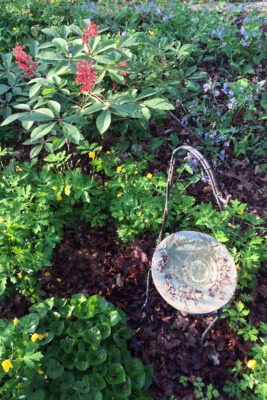
4-15-17 Dripper at small bird bath surrounded by Red Buckeye, Virginia Bluebells, Celandine Poppies and Wild Ginger
© Margy Terpstra
Next, consider adding a battery operated watering timer. We have two dripper baths with these timers. Our set-up has the drippers alternate, each comes on for an hour and a half, a few times a day.
Note that a dripper bath is a warm season only water feature. The water in the tubing can freeze, so plan to use a dripper from late April, after the last spring frost to about mid-October, before the first fall frost. The dripper tubing must be disconnected, drained completely and brought in for the winter.
Another moving water option would be to add a fountain to a porch or deck. This would require electricity with a GFCI outlet for the pump. Here are two examples. The bowl is only out in warm months. We enjoy it, wrens and chickadees drink from it. Birds come to the larger fountain on the deck every day. In winter, we put a bird bath heater in this one and put it in an insulated tray. Both of these fountains are on timers.
For the gardener with some space, a bubbler is another idea. We installed our bubbler pond in the fall of 2000 and to date, we’ve documented 125 species of birds at this water feature, some rare and endangered.
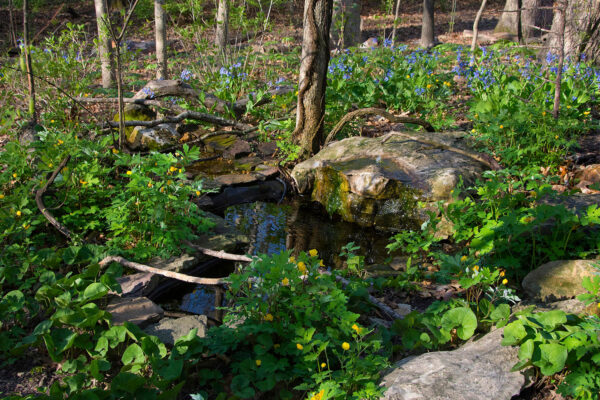
4-30-18 Bubbler area in Spring surrounded by native plants, featured in Nature’s Best Hope by Douglas W. Tallamy
© Margy Terpstra
We’re amazed at the variety of species this small water feature has attracted. Some birds have been state records such as a wandering Varied Thrush on a bitterly cold day, 1-23-03. This rarity stands as the tenth record for Missouri and prompted me to begin photographing birds. Last winter, Common Redpolls came to the bubbler on three mornings to drink. There were at least seven in the small flock. These little sprites are the rarest of the finches that might be seen in Missouri.
Living with other critters has some challenges. We have chipmunks, rabbits, squirrels, opossum, raccoons, American mink (rarely), striped skunk (once), white-tailed deer, red fox and coyote. Some can become
nuisances. Recently, one raccoon that swims in the pond pulled out the pump tubing. Deer love to eat native hydrangeas. We fix or replace what is needed and fence off some of the plantings. Basically, we just deal with problems as they come up. We have no magic solutions, but Missouri Department of Conservation has this page of suggestions: https://mdc.mo.gov/wildlife/nuisance-problem-species
Another type of bubbler to consider is a pondless version. In 2011, we helped Robert Weaver, owner/editor of The Gateway Gardener magazine, install a pondless bubbler in his garden. Robert produced a video of this project. The link can be found at his website or by looking at a recent blog post which leads to different links with more information on all of these water features, including components and maintenance.
Feel free to explore our website for more ideas. Our garden is truly forBirdsong!
Article and all photos are copyrighted and given to Wild Ones St. Louis Chapter to use with Margy’s permission


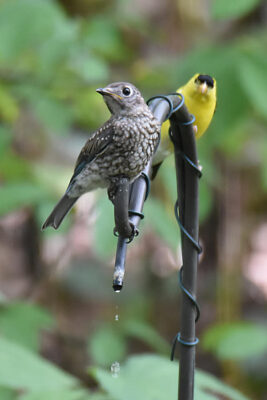
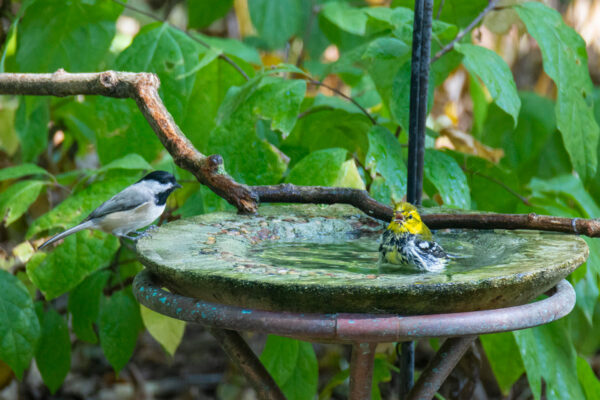

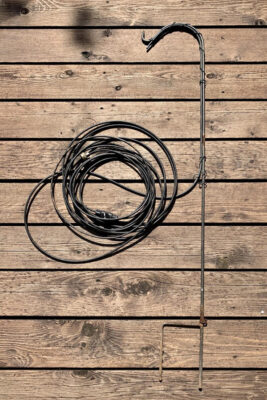
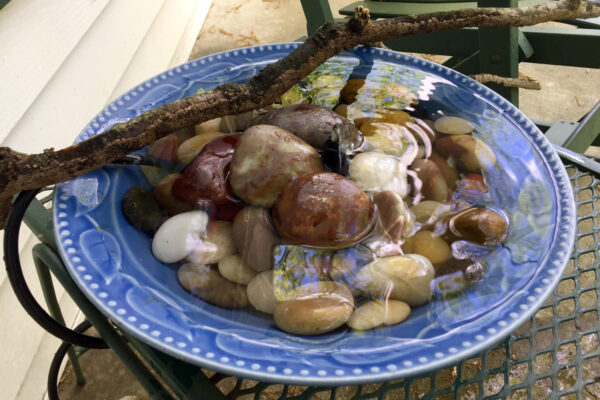
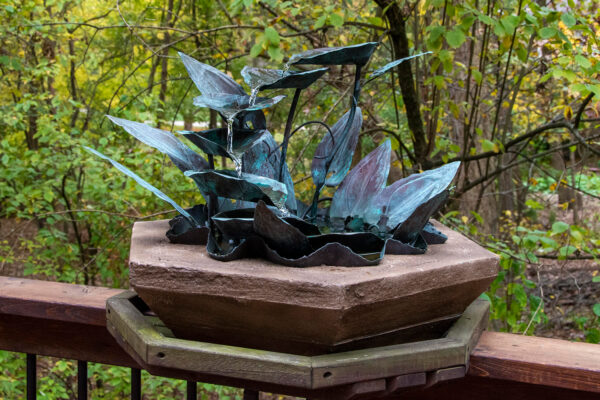
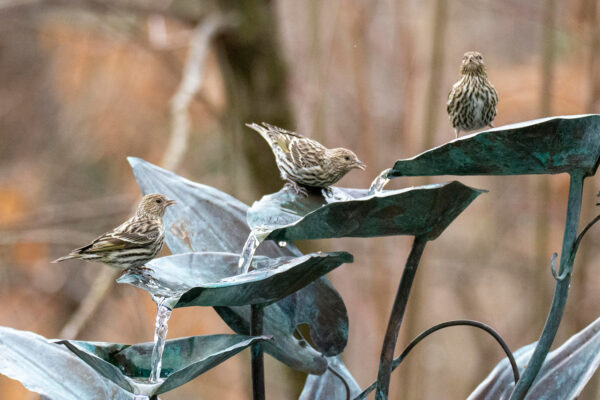

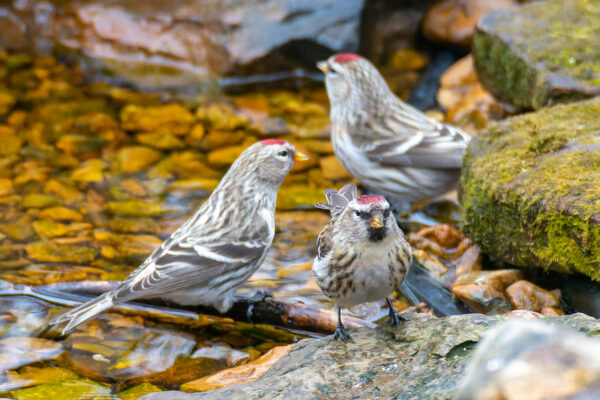

Great read. Thank you Margy
Thank you, Lori. From hummingbirds to hawks, birds keep a’coming.
I have installed several bubblers for clients and the birds love the . The robins will sit on top of the bubblers and let the water flush through their feathers.
Yes, robins and other thrushes absolutely love water. Even on the coldest days, they come in. It helps to flush parasites and keep their feathers clean. Zelda, I’d love to see some photos of your work. Contact me when you have a moment.